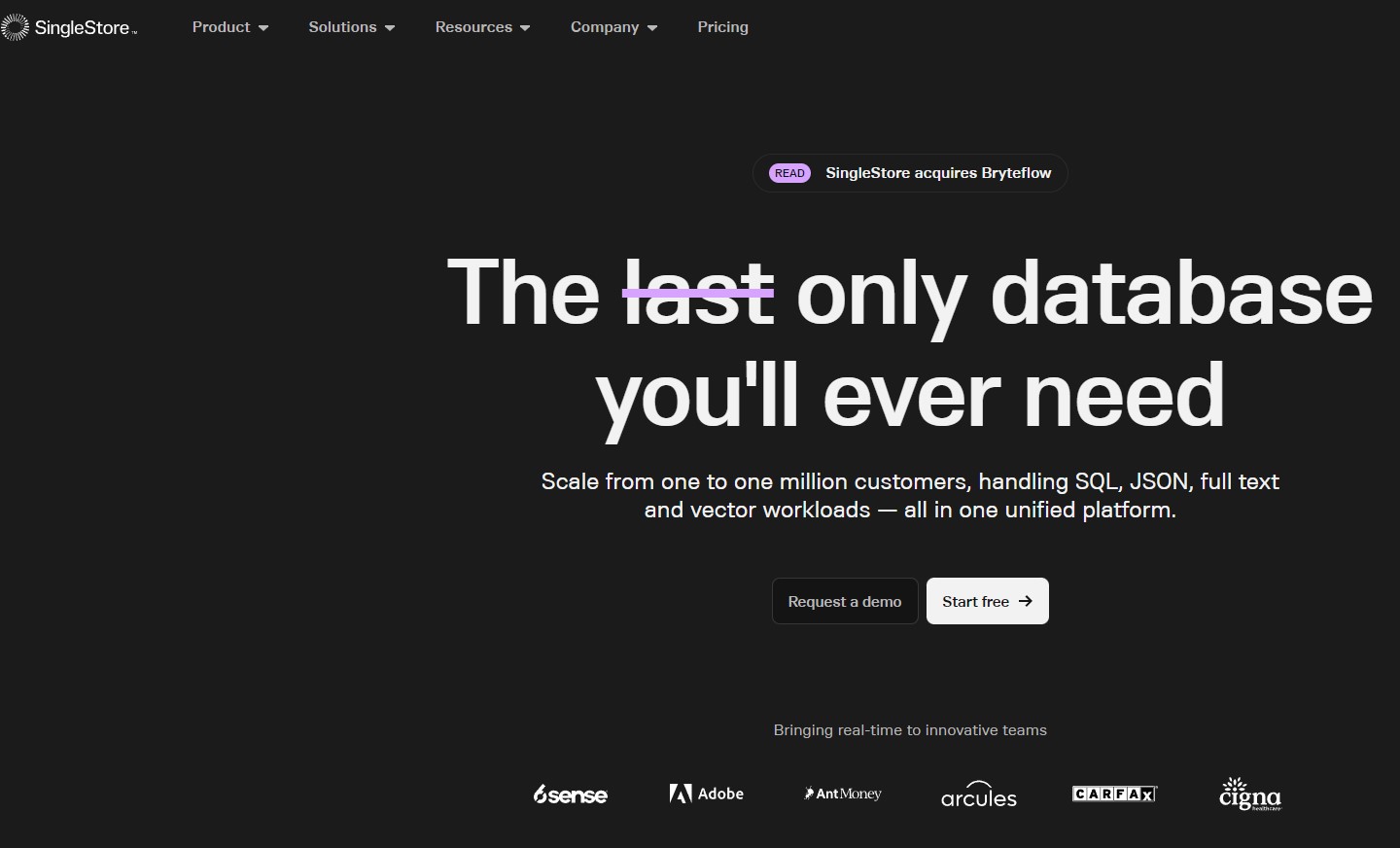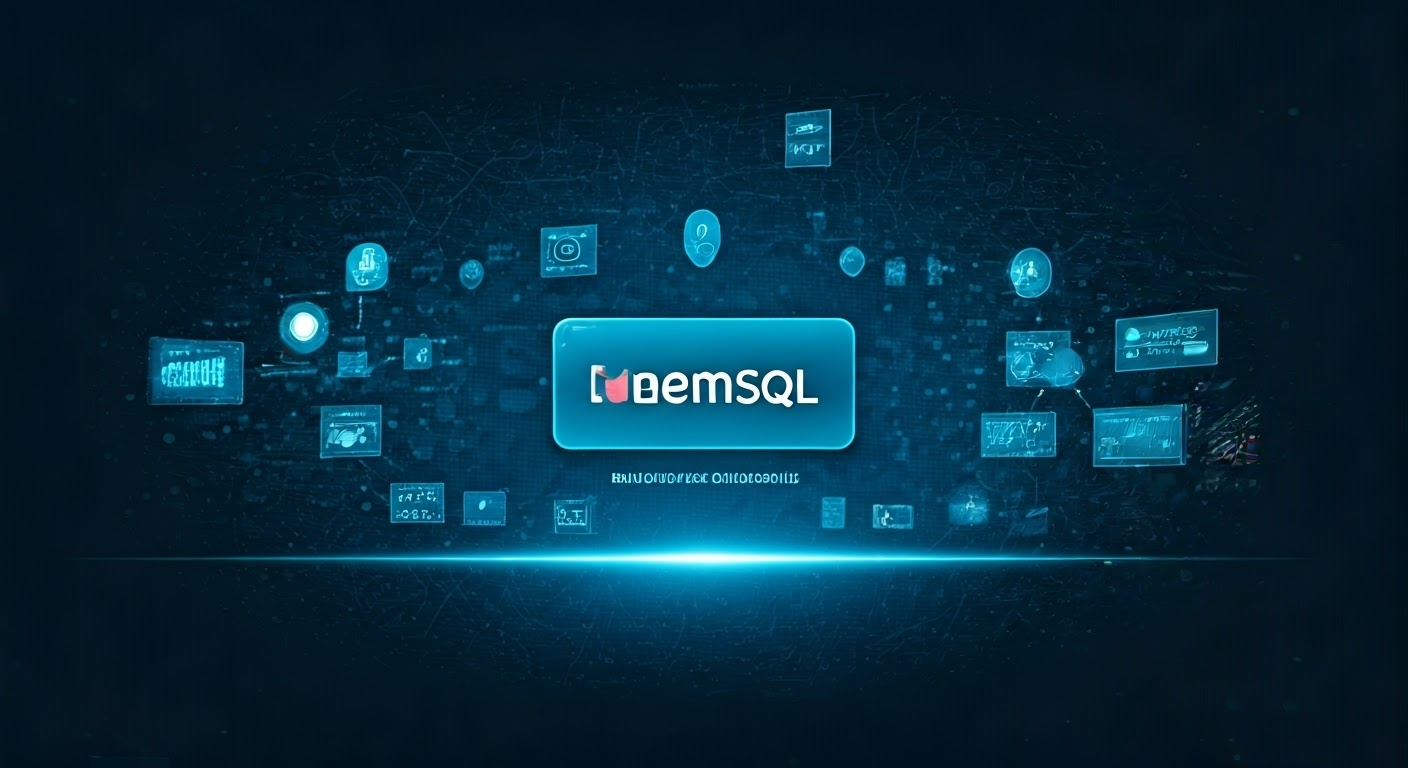
MemSQL: The Ultimate Real-Time Data Platform

Key Highlights
- A cloud-native, distributed SQL database designed for modern, data-intensive applications.
- Handles both transactional and analytical workloads with high performance, making it ideal for HTAP use cases.
- Offers a unified platform for real-time data ingestion, processing, and analysis.
- Provides ANSI SQL support, making it easy to integrate with existing tools and applications.
- Boasts a flexible architecture that can be deployed on-premises, in the cloud, or in hybrid environments.
- Backed by strong Series F funding, reflecting its position as a leader in the real-time data platform market.
Introduction
In today's data-driven landscape, organizations need a database platform that can handle the demands of real-time data. MemSQL, now known as SingleStore, emerges as a powerful solution by combining the robustness of a relational database with the scalability needed for demanding, real-time applications. SingleStore excels in ingesting, processing, and analyzing massive volumes of data with exceptional speed and efficiency.
Understanding MemSQL's Core Architecture

At its core, MemSQL is built upon a distributed architecture designed for high availability and scalability. Data is partitioned and distributed across multiple nodes, ensuring optimal performance and resilience.
The architecture comprises two main node types: leaf nodes and aggregator nodes. Leaf nodes are responsible for storing and managing the actual data partitions. They handle data ingestion, updates, and retrieval. Aggregator nodes act as query routers, distributing incoming queries to the appropriate leaf nodes, aggregating the results, and returning them to the client application. This separation of concerns allows for efficient workload distribution and parallel processing.
Key Components and Their Functions
MemSQL's architecture comprises several critical components:
- Nodes: The fundamental building blocks of a MemSQL cluster, categorized as aggregator nodes and leaf nodes.
- Aggregator: Responsible for receiving client connections, routing queries, aggregating results from leaf nodes, and managing metadata.
- Leaf Nodes: Store and manage data partitions, handling data ingestion, updates, and retrieval.
- SingleStore Pipelines: A powerful feature enabling real-time data ingestion from various data sources, such as Apache Kafka, Amazon S3, and more.
- SQL Engine: Processes SQL queries, utilizes a cost-based optimizer for efficient query execution, and compiles queries into machine code for optimal performance.
These components work together to deliver a high-performance, scalable, and reliable database platform.
How MemSQL Handles Real-Time Data Processing
MemSQL excels at processing real-time data streams, making it perfect for applications demanding immediate insights. Its ability to ingest data at high velocity, process it with low latency, and execute queries concurrently ensures real-time analytics and decision-making capabilities.
Here's how MemSQL handles real-time data processing:
- Continuous Data Ingestion: SingleStore Pipelines enable continuous data ingestion from diversasources like Kafka, seamlessly integrating with real-time data pipelines.
- In-Memory Performance: MemSQL leverages in-memory technologies for high-speed data processing. Although it offers both in-memory and disk-based storage options, its in-memory capabilities are particularly advantageous for low-latency, real-time workloads.
- Powerful Query Language: MemSQL supports ANSI SQL, allowing users to perform complex queries and analyze streaming data in real-time. Its query language also includes specialized functions for handling time series data, making it well-suited for applications such as IoT analytics and financial trading.
The Power of MemSQL for Various Industries

MemSQL's ability to handle real-time data with high performance and scalability makes it a compelling choice for a wide range of industries. Organizations in sectors like financial services, retail, gaming, and ad tech are leveraging MemSQL to power their mission-critical applications.
From fraud detection and risk management in finance to personalized recommendations in retail, MemSQL empowers businesses to unlock the value of their data in real time.
Use Cases in Financial Services
The financial services industry thrives on real-time data. Whether it's processing high-volume transactions, detecting fraudulent activities, or analyzing market trends, speed and accuracy are paramount.
MemSQL's real-time data processing capabilities, coupled with its robust SQL support, make it an excellent fit for these use cases. Financial institutions can use MemSQL to:
- Process high-frequency transactions with low latency, ensuring a seamless customer experience even during peak periods.
- Perform real-time fraud detection by analyzing transactions as they occur, minimizing potential losses.
- Conduct complex risk analysis and portfolio optimization using sophisticated analytical models.
Real-Time Analytics in Retail
For retailers, understanding customer behavior and market trends in real time is crucial for optimizing pricing, inventory, and marketing campaigns. MemSQL helps retailers gain actionable insights from their data by enabling:
- Real-time inventory management: Track inventory levels across multiple channels, predict demand fluctuations, and prevent stockouts.
- Personalized recommendations: Analyze customer browsing and purchase history to deliver highly relevant product recommendations.
- Targeted marketing campaigns: Segment customers based on real-time behavior and preferences to deliver personalized promotions.
Feature
Benefit for Retail
High-performance data ingestion
Process and analyze large volumes of streaming data from e-commerce platforms, mobile apps, and in-store sensors.
Flexible query language
Perform complex queries on JSON and other data formats commonly used in retail analytics.
Scalable architecture
Easily handle peak shopping seasons and growing data volumes without sacrificing performance.
KeywordSearch: SuperCharge Your Ad Audiences with AI
KeywordSearch has an AI Audience builder that helps you create the best ad audiences for YouTube & Google ads in seconds. In a just a few clicks, our AI algorithm analyzes your business, audience data, uncovers hidden patterns, and identifies the most relevant and high-performing audiences for your Google & YouTube Ad campaigns.
You can also use KeywordSearch to Discover the Best Keywords to rank your YouTube Videos, Websites with SEO & Even Discover Keywords for Google & YouTube Ads.
If you’re looking to SuperCharge Your Ad Audiences with AI - Sign up for KeywordSearch.com for a 5 Day Free Trial Today!
Conclusion
MemSQL stands out as the ultimate real-time data platform, offering key components and functions that excel in handling real-time data processing. Its core architecture empowers various industries with use cases in financial services and real-time analytics in retail. MemSQL's ability to integrate seamlessly with existing systems and handle big data applications sets it apart from other databases. For those seeking unparalleled real-time data solutions, MemSQL is the answer. Explore the power of MemSQL and revolutionize your data processing capabilities today.
Frequently Asked Questions
What Makes MemSQL Different from Other Databases?
MemSQL distinguishes itself by offering a unique blend of real-time data processing capabilities and the familiarity of SQL. Its ability to handle both OLTP and OLAP workloads with high performance, while offering in-memory and on-disk storage options, makes it a versatile choice for various use cases.
Can MemSQL Handle Big Data Applications?
Yes, MemSQL excels at handling Big Data applications. Its distributed architecture allows it to scale horizontally, accommodating the massive datasets and high-velocity data streams common in Big Data environments. Moreover, its support for various connectors and integrations ensures seamless data ingestion from multiple sources.
How Does MemSQL Integrate with Existing Systems?
MemSQL offers a wide array of connectors, making it easy to integrate with existing data workflows and applications. It seamlessly connects with popular tools like MySQL, Oracle, and Apache Kafka, providing a unified platform for managing and analyzing data from various sources.
